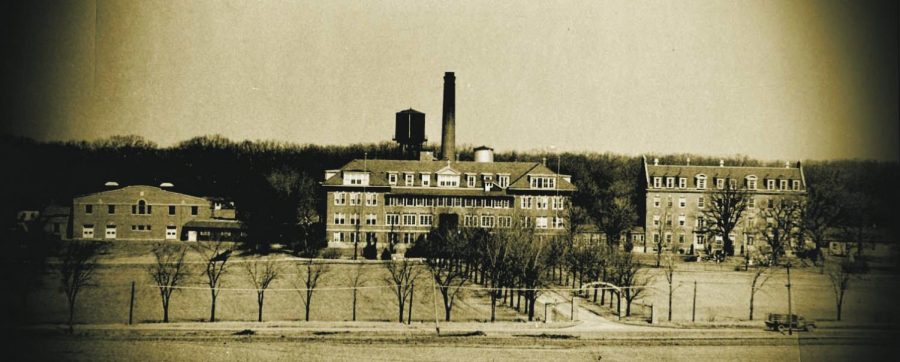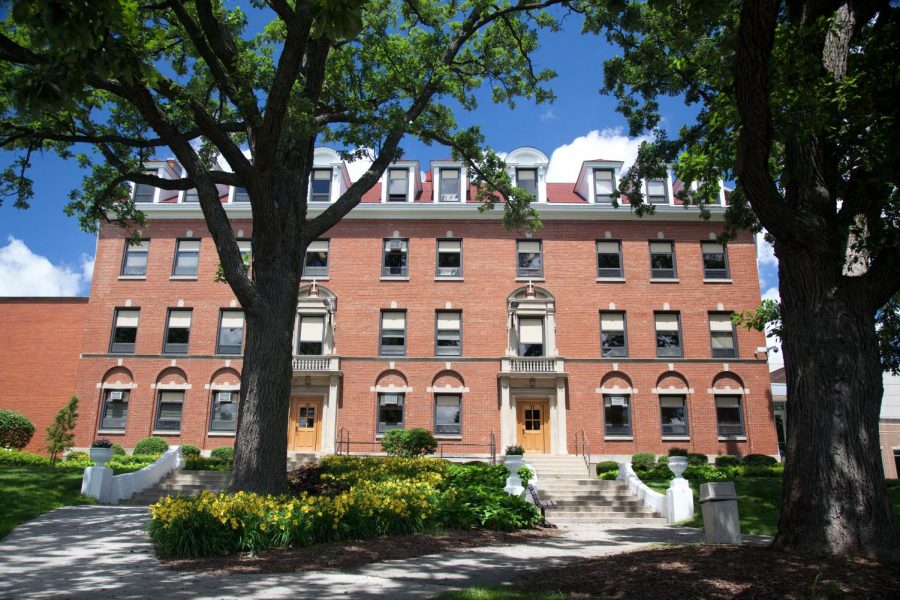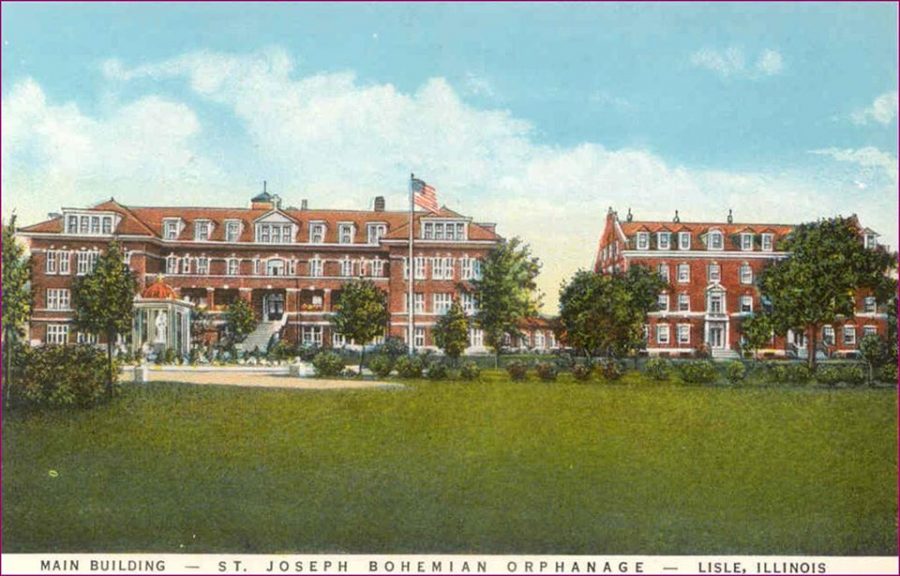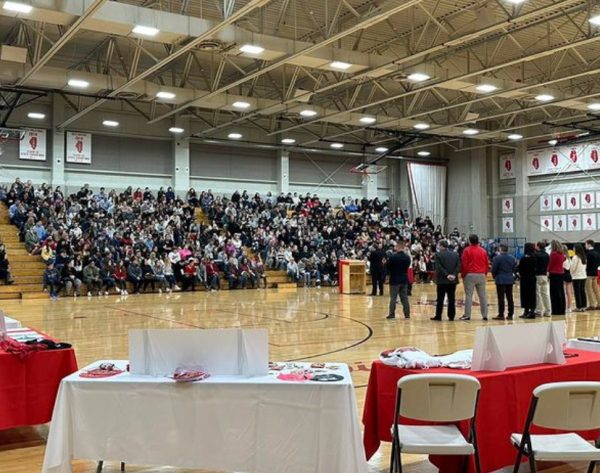Benet Hall Turns 100
The date carved on the cornerstone of Benet Hall is 1919. Construction continued until its completion in 1920. The sidewalk that winds in front of Benet and St. Joseph Halls offers a glimpse of what the structures would have looked like in their early years. A brilliant white staircase bridges the snow-covered lawn with the second floor of St. Joseph Hall. Children race through the snow, their laughter ringing out through the clear air. Numerous Benedictine sisters accompany them, diligently caring for the children in ways they could not imagine. Needless to say, Benet Hall’s purpose has changed remarkably over its century-long existence. It was initially an orphanage. One hundred years later, the halls are still filled with children.
Structurally, Benet Hall has changed significantly over the years. It was once connected by an enclosed walkway to the slightly older St. Joseph Hall as opposed to today’s nearly seamless two-story transition. Considered the “boys’ building,” it contained kitchens, a dining hall, and the boys’ dormitory and club room. In fact, the Benet campus looks nothing like it looked in the plans made around 1948. By 1980, there was supposed to be another building identical to Benet Hall connected to St. Joseph Hall. Other enclosed walkways were illustrated as forming a large rectangular complex set some distance behind these three main buildings, with other buildings “bulging” from the main pathway. In a way, this plan resembles the Spanish Missions of the southwestern United States: connected buildings of various sizes enclosing a central courtyard. Branching off from this enclosure were St. Joseph Hall, Benet Hall, and Benet Hall’s forgotten twin. St. Martin Hall was instead built on the site of this forgotten counterpart, and athletic fields and parking lots now fill some of the space where the courtyard would have been.
Benet Hall was initially built to house the orphans of the St. Joseph’s Bohemian Orphanage. Run by the Benedictine Sisters of the Sacred Heart Monastery, this orphanage provided shelter and education to orphan children of Central European descent. The boys and girls received a well-rounded education. There were also lessons in music, home economics, and “fancy work” (such as embroidery), the latter two mostly targeted towards girls. In addition to elementary and junior high grades, the students could also undergo specialized training that would prepare them for a future in business. This training program was known as the “Lisle Industrial School for Girls” and the “Lisle Manual Training School for Boys” (Allison pg 32).
An article written by the late Sister Barbara Ann Svec, OSB accurately describes St. Joseph’s Bohemian Orphanage as being a “self-contained community” (Lisle Benedictine Women, June 2013). The early Benet Hall was at the center of a small civilization. Sick children were tended to in the orphanage’s infirmary. A separate building housed a bakery. The large structure that towers above the entire complex to this day was, and still is, a power plant. There was a laundry room equipped with all sorts of machines. There was even a printing room with a hand press. The hardest to imagine is certainly the working farm. Believe it or not, chickens once inhabited the grounds of Benet Academy! The children worked the farm along with the sisters.

In 1956, the Orphanage closed and the buildings were occupied by the all-boys St. Procopius Academy in 1957. This school merged with the all-girls Sacred Heart Academy to form the present Benet Academy in 1967. Today, Benet Hall is filled with classrooms predominantly devoted to the subjects of social studies and English. In a way, Benet Hall has not changed much in purpose. It is still a haven where children are nurtured to their full potential. Young men and women still walk the halls, their footsteps echoing the same tune of those who came before them.










